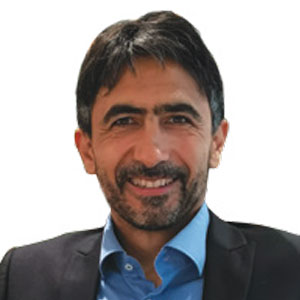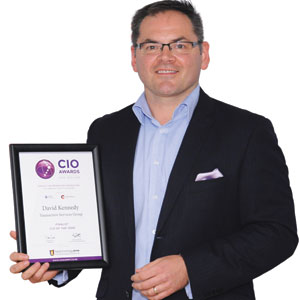THANK YOU FOR SUBSCRIBING

Dr. David Soldani, Chief Technology Officer, Huawei Technologies
Smart Cities may be regarded as systems of people interacting with and using flows of energy, resources (materials and financing) and services to catalyze a sustainable economic development, resilience, and high quality of life. Cities become smart by making use of Information and Communication Technology (ICT) infrastructures and applications in a process of efficient, effective, transparent urban planning and management that meets the social, economic and political aspirations of citizens.
Challenges and Smart City Strategies
Examples of challenges facing cities are: crime, changing climate, congestion, poor access to jobs and city services, reduced housing affordability and increasing pollution.
As of today, many countries have set a national agenda for funding specific Smart City initiatives. This includes: China, Japan, United States, Singapore, Australia, UK and many member states of the Europe Union (EU). Currently, the focus of national and regional strategies has been mostly placed on the following broad thematic streams:
• Integrated infrastructure and processes– Integrating the various existing and new ICT infrastructure (passive and active) within and across cities; modernizing infrastructure and creating high quality living environments.
• Sustainable districts and built environment– Solutions to improve energy efficiency, generate low carbon energy, modernize infrastructure and create high quality living environments.
• Sustainable urban mobility– Integration and management of collective city transport for door-to-door seamless multi-modality; electrification of collective city transport; and improved urban freight logistics and distribution.
• Focus on citizen:Creating scalable projects targeted at enabling environment for citizens to solve the problems they identify and facilitating a conversation between stakeholders, where citizens’ voices are instrumental in the solution design.
• Business models, finance and procurement: Creating new integrated business models with innovative local partnerships and adapted procurement; and building up a national market for innovation that opens up investments.
• Integrated planning, policy and regulations: Innovative forms of smart city policies and regulations needed to enable a large scale implementation and roll-out of smart cities, looking at new governance concepts targeted to coordinate and integrate all stakeholders.
Smart City Architecture and Enabling Technologies
From a technology perspective, Smart Cities are made up of various decupled layers — device layer(sensors, GPS, camera, smart phone, etc.), network layer (NB-IoT, eMTC, WiFi, cV2X, 5G, microwave, xPON, switch, routers, etc.), platform layer(storage, computing and network resource pools, unified communications, video surveillance, convergence conference, telepresence, etc.), data layer (data collection, data integration, capability integration, process integration, etc.), dashboard and application layer (smart security, smart transportation, smart government, smart lighting, smart grid, emergency communication, smart healthcare, smart education, smart campus, smart construction, etc.).
Each one of these layers incorporates various types of technologies that make it possible to understand how the city works at a level of unprecedented detail. Also, those enabling technologies provide new and innovative services to inhabitants and local enterprises, and deliver new government capabilities to all aspects of the city at reasonable costs.
Much of the current debate about smart cities concerns the data layer, and some of the most important smart city work – currently being explored in trials, demonstrations and projects –is to solve issues of data security, privacy preservation, trust, sharing, standardization, APIs, and commercialization. On this layer, there are opportunities for multiple players to help cities to understand what data they have, how they could collect them, as well as hot to acquire more data, analyze and use them.
Approaches to Developing Smart Cities
In addition to the technology layers, a smart city development requires an integrated intelligent city framework with proper representation and integration of the city’s various stakeholders (government agencies, enterprises and citizen groups); ecosystem creation throughout a cross department collaboration (public security, city management, transportation, healthcare, energy, etc.); and a shared and standardized service platform (to build for common success Cities need to work together). The operating models for smart cities are basically three:
• Centralized approach – Characterized by a central stakeholder or committee that drives the project forward, aligning the requirements of disparate services and stakeholders, and usually deploying a limited number of platforms and networks.
• Fragmented approach – Characterized by a number of individual stakeholders who are each responsible for a specific service area and develop smart city services by deploying own network and platform strategies, independently of any central authority.
• Hybrid model – A common network or a common platform, or both, which is deployed to support the requirements of multiple smart city services.
A phased approach to implementation is a crucial element of a successful Smart City deployment: focus on an “anchor smart city service” with a clearly defined investment case for then using the same infrastructure and developed key learnings, to support other smart city services. In practice, we would need:
1. A test-bedding approach to apply algorithms to cater for smarter cities and states needs, in the context of regional innovation clusters, providing local governance, data handling and business models.
2. Applied, validated and scaled solutions to local challenges and public services, such as, but not limited to: mobility, security, steer lightning, energy, kiosks, parking, wasting, logistic, assets management, physical infrastructures monitoring and control.
3. Near-to-standardized service models, data handling protocols and contractual models for data sharing. National innovation spaces may be created to assure that research on the above technology fields and novel applications will be quickly tested, piloted and thus exploited in a context with maximum involvement of all stakeholders.
Such elements, resulting from private-public partnerships, will enable stakeholders to develop new businesses facilitated by advanced technologies, applications, and business models, acting as incubators and accelerators of data-driven innovation.
Weekly Brief
I agree We use cookies on this website to enhance your user experience. By clicking any link on this page you are giving your consent for us to set cookies. More info
Read Also
Navigating Compliance Challenges in ESG AML and Digital Onboarding
A Vision for the Future: Automation, Robotics, and the Smart Factory
The Rise of Hyper Automation
Transforming Business Operations with Robotic Process Automation
Combining Automation with AI to Achieve Human-Like Interaction
Implementing RPA - 5 Ultimate Prerequisite
Incorporating the power of recognition into our vendors' sustainability journey
Elevating Guest Experience with Data






















